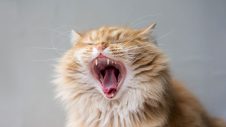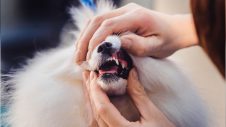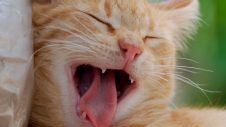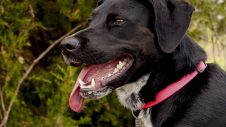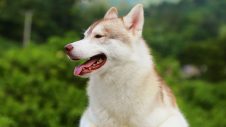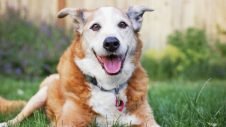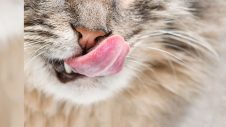So why do my pets teeth need cleaning?
Dental disease is one of the most common ailments seen by vets. It presents as one or more of the following: gingivitis (inflammation of the gums), tartar accumulation (a combination of food, saliva, bacteria and hair) and tooth enamel damage. The build up of tartar (brown-green material) on teeth and under the gum line will cause pain and infection. If left unchecked the infection can spread to surrounding bone and enter the blood stream causing general health deterioration. Once periodontal disease starts the changes are irreversible and it becomes easier for more plaque and tartar to accumulate leading to a worsening of the disease.
What signs am I likely to see?
There are a number of signs which should alert you to the possibility of dental disease or other mouth problems being present. Your pet may show less interest in food, or approach the food bowl but be reluctant to eat. It may chew with obvious caution or discomfort, drop food from the mouth, or may swallow with difficulty. Dribbling may be seen, possibly with blood and there may be an unpleasant odour to the breath. In some cases pets will paw at their mouths or shake their heads. Reluctance to eat may lead to weight loss.
What should I do if my pet is showing signs of dental problems?
If your pet is showing signs of dental disease or exhibiting signs of mouth discomfort it should be checked by your vet. You will be advised of the most appropriate course of treatment.
If your pet’s teeth require cleaning, it is more involved than simply removing visible tartar from the tooth surface. The first step is a general examination of the mouth and back of the throat. Any teeth, which obviously need removing, are noted at this stage.
Next, a fine probe is used to explore under the gums on all sides of the tooth looking for any tooth deficits or evidence of jawbone erosion. Worn teeth are also checked to see that the pulp cavity (inner core) of the tooth is not exposed which can cause pain.
The first stage of cleaning is to remove any thick, heavy tartar build up. A hand scaler is then used to remove any finer particles of tartar from the tooth. Next is the most critical stage, a curette is used to clean any tartar, hair or debris under the gumline. It is this material under the gum-line, which leads to progression of dental disease and all of its associated health risks.
Once the hand cleaning is completed an ultrasonic scaling machine is used to finish cleaning the exposed tooth surface. This machine is similar to those used by human dentists and uses sound waves to remove very small or invisible particles of tartar. Finally the teeth are polished using polishing paste and soft rubber cup, once again identical to that performed by our own dentist. The teeth are polished to restore their original smooth surface, which resists tartar build up.
After teeth are cleaned, any requiring removal are extracted. Some of the larger teeth may need to be cut into several pieces to be removed, or gums may need to be cut to get them out. In some cases the hole left from and extracted tooth will be stitched.
Once all necessary teeth are removed the mouth is flushed with an antiseptic. Pets are usually given antibiotics by injection and in certain circumstances will be sent home with continuing tablets or capsules. A check up will be required if any teeth have been extracted to ensure that gums are healing well.
How do I keep my pets teeth clean?
Anything that provides good dental “exercise” will help to keep teeth and gums clean and healthy. Foods that are chewy will provide friction at the gum-line physically removing plaque before it mineralises and hardens.
For dogs
This means raw, never cooked marrowbones such as lamb shanks, beef shins or even brisket flaps. Smaller dogs can be fed raw chicken wings or legs. In addition any tough cuts of meat cut into long strips or large chunks will provide dental exercise. Raw hide chews and specially prepared dental “treats” are also effective removers of plaque.
For cats
Raw chicken wings or necks are very effective and strips or chunks of tough, raw meat will help keep the tartar from their teeth. There are some special dental “treats” as well. As with dogs some form of dental workout should be done at least twice weekly.
Tooth brushing
Using a brush to clean your pet’s teeth is effective but pet only toothpastes must be used. These are usually flavoured (poultry/malt etc.) and are safe for your pet to swallow. There are several different brushes to choose from, consult with your vet about the best option for your pet.
Food
Dry food will reduce the amount of tartar build up but a special dental diet “Hills t/d” has recently become available. The biscuits are a structured mesh, which act like a brush, cleaning the teeth as the pet eats. It can be fed as a fully balanced diet and sole food source and is available for cats, small dogs and medium to large dogs.

 Greencross Vets
Greencross Vets 